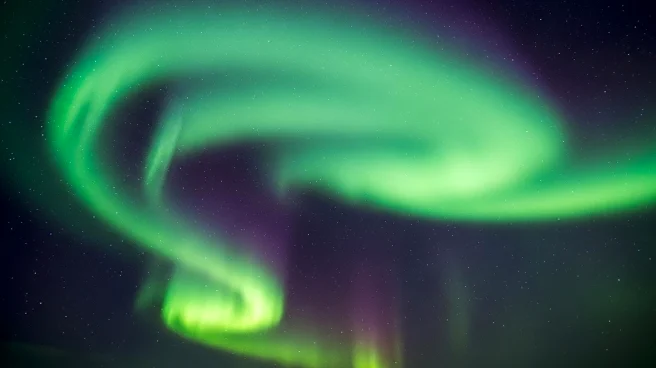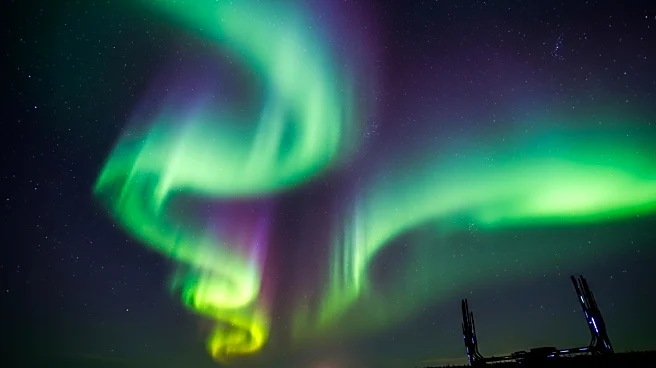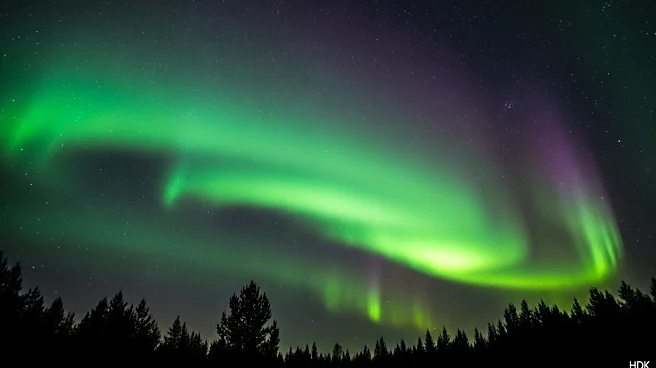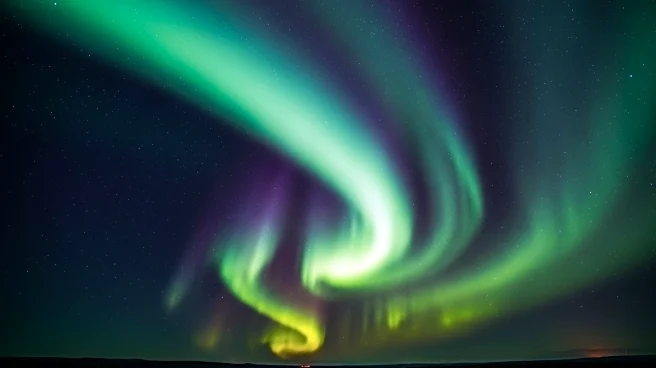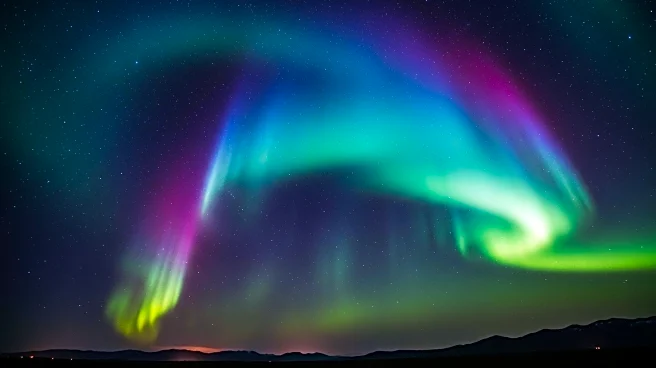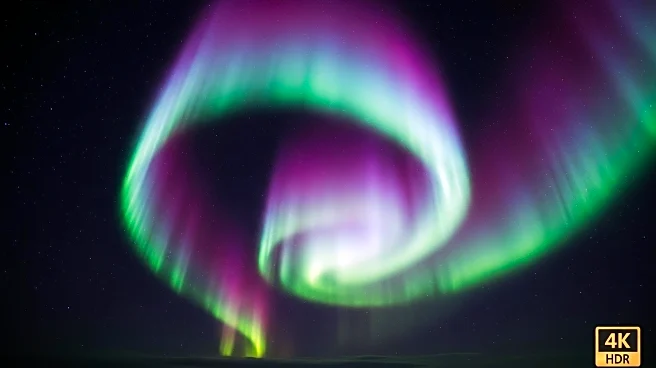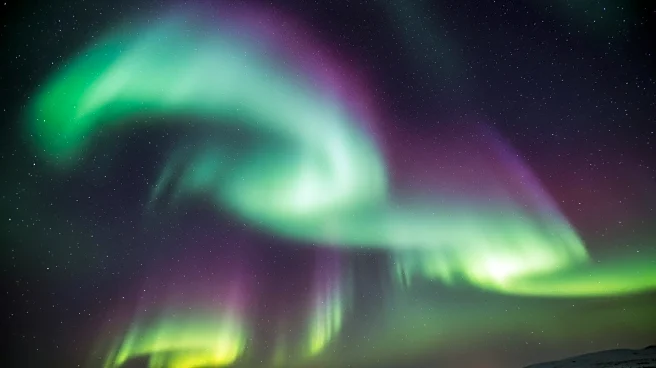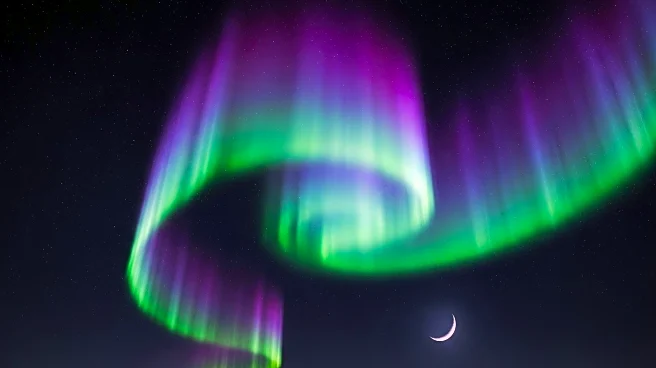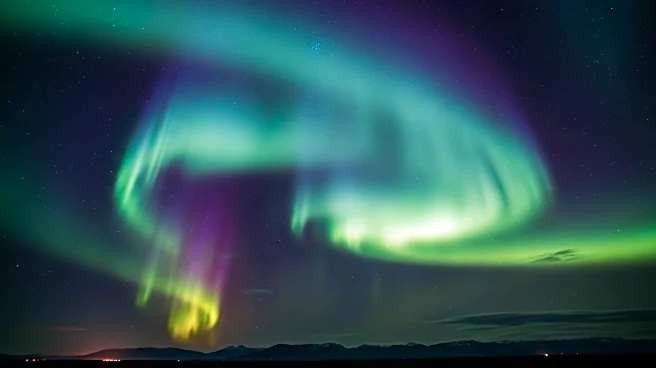What's Happening?
Space weather physicists are forecasting an increase in auroral activity over the next two years as the sun enters a turbulent decline phase. This period, described as the sun's 'last gasp,' is characterized by complex sunspot groups that can trigger powerful geomagnetic storms. Despite the solar maximum having passed, the declining phase of the solar cycle is expected to be particularly active, offering exciting opportunities for aurora chasers. The sun follows an 11-year cycle, with solar maximum marked by a frenzy of sunspots and eruptions, followed by a decline towards solar minimum. During this decline, long-lived coronal holes become more common, releasing high-speed solar wind that contributes to geomagnetic storms. These storms, while not as intense as those during solar maximum, can last longer, providing multiple nights of auroral displays.
Why It's Important?
The anticipated increase in auroral activity has significant implications for both skywatchers and technology-dependent industries. For aurora enthusiasts, the next few years could offer spectacular displays, especially if the sun's 'last gasp' results in a G5-level geomagnetic storm. However, these storms pose challenges for satellites, navigation systems, and communication technologies, as prolonged radiation and geomagnetic activity can disrupt GPS networks, radio signals, and damage spacecraft. The potential for increased geomagnetic storms highlights the need for preparedness in sectors reliant on satellite technology and communication infrastructure.
What's Next?
As the sun continues its decline, scientists and space weather forecasters will closely monitor sunspot activity and coronal hole formations. The possibility of a 'last gasp' event within the next two years could lead to significant geomagnetic storms, requiring vigilance from industries affected by space weather. Aurora chasers are advised to stay informed about solar activity forecasts to maximize viewing opportunities. The scientific community will continue to study the sun's behavior to better predict and mitigate the impacts of geomagnetic storms on technology and infrastructure.
Beyond the Headlines
The sun's declining phase offers a unique opportunity to study the interplay between solar activity and Earth's magnetic field. Understanding this relationship is crucial for improving space weather forecasting and developing strategies to protect technology from geomagnetic disruptions. The cultural significance of auroras, often seen as mystical phenomena, may also gain renewed interest as more people experience these natural light shows. Additionally, the study of solar cycles contributes to broader research on climate patterns and their potential impacts on Earth.

